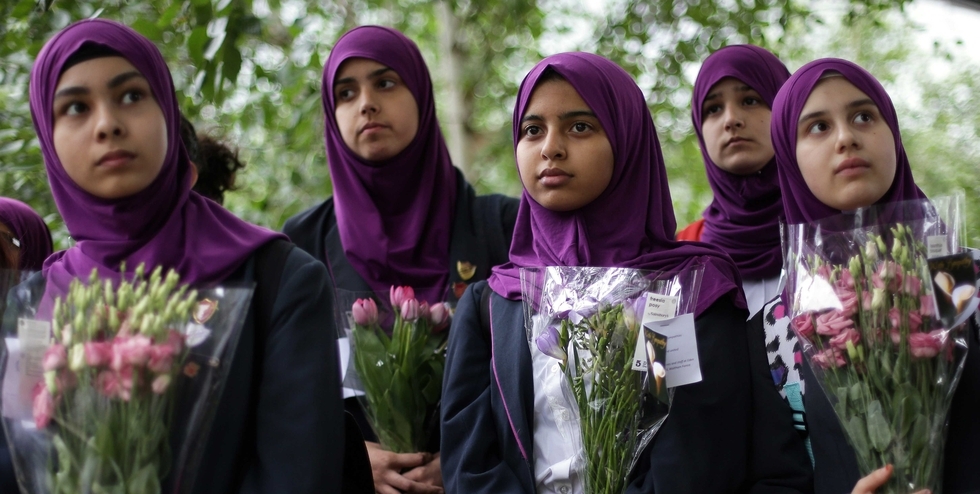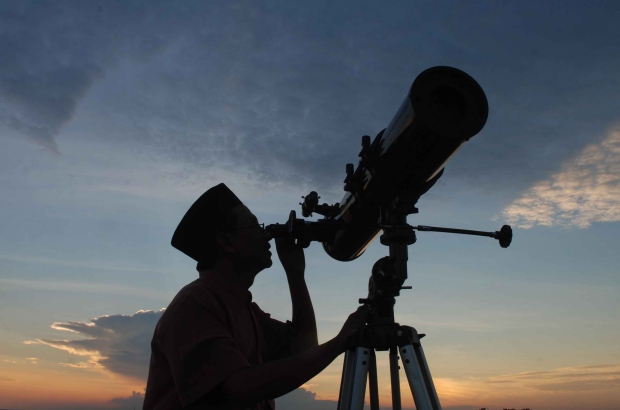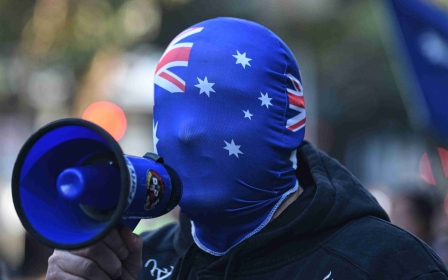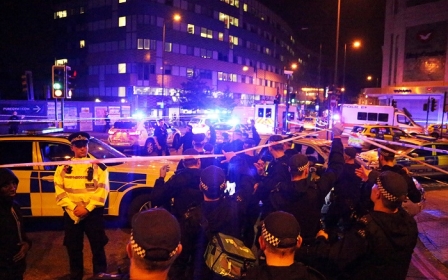
Islamophobia, 20 years later: How we can hope to defeat it
Twenty years ago this month, the Runnymede Trust, a race equality think-tank based in London, published the report Islamophobia: A Challenge for Us All.
Runnymede did not invent the word “Islamophobia”, but it did help to introduce it into widespread use throughout the world.
The word was not, and is not, entirely satisfactory. But it is now generally accepted as useful shorthand for referring to a mix of discourse, behaviour and structures which express and perpetuate mistrust, hostility and rejection among non-Muslims towards people of Muslim heritage and tradition, as well as towards Islamic societies and cultures.
Some of the beliefs and behaviour to which the word Islamophobia refers have existed for many centuries. Others are relatively new, and have developed only since sizeable Muslim communities were established in Western societies from the 1970s onwards.
In all its forms, Islamophobia has a range of different causes and drivers. It is dangerous and damaging in a range of diverse ways.
The young Somali poet Warsan Shire wrote in 2015:
i held an atlas in my lap
ran my fingers across the whole world
and whispered
where does it hurt?
it answered
everywhere
everywhere
everywhere.
The world hurts everywhere. There are many kinds of hurt, as there are also many kinds of places where hurt happens.
There are similarities among the different kinds of hurt inflicted by Islamophobia. Nevertheless, it’s crucial to distinguish between them.
The Runnymede report 20 years ago distinguished between four main kinds of hurt in Western countries:
Attitudes and assumptions which view all Muslims as the same, regardless of nationality, social class, gender and political ideology. These intrinsically regard Muslims as a threat and different from non-Muslims, with no shared values, needs or interests
Violence, which includes not only hate crimes against persons and property, but also micro-aggressions and the unkindness of strangers in public places
Direct and indirect discrimination in employment and the provision of services, including the criminal justice system and so-called counter-terrorism measures
Exclusion and absence from political decision-making and from mainstream cultural life – or “missing Muslims”, to cite the title of a recent UK report
There are connections between these four kinds of hurt, the 1997 report stressed. Each can be both a cause and a consequence of each of the others.
It is often said that only those who are on the receiving end of exclusion and pain know where the shoe pinches. But they do not necessarily know, it has also been said, who or what fitted them up.
Who benefits from Islamophobia, or thinks they do, both in the short term and the long term? What are the drivers, the exacerbating factors, the functions, the purposes? What leads to, and leads from, what?
It has become increasingly clear during the last 20 years that Islamophobia is caused and exacerbated by several separate trends coming together and reinforcing each other. They include the following:
Patterns of inequality: There is a desire to justify patterns of inequality in modern Western societies, which work to the disadvantage of, among others, Muslim communities
Fossil fuel supplies: There is a desire in Western countries to maintain and defend fossil fuel supplies in the Middle East; to justify the military invasions of Iraq, Libya and Afghanistan; and to motivate Western troops and security services to mistreat, torture and kill
Israel/Palestine: Western countries, particularly the United States, wish to stand by and support the state of Israel, particularly its current leadership, in its dealings with Palestine
Globalised insecurity: Governments cannot control, to the extent that they did in the past, economic, financial, cultural and ecological borders. The resulting insecurities lead to scapegoating and moral panics. Muslims and other minorities become convenient enemies and targets, even though they are not the principal causes
Commercial pressures on the media: Proprietors and editors wish to sell newspapers, and therefore to excite and orchestrate frissons of fear, spreading and responding to moral panic. They want to reassure readers that threats to identity, status and normality are understood and can be dealt with
Electoral politics: Political parties and individual politicians wish to gain votes in local and national elections, and to diminish the attractiveness of political opponents. This frequently leads them to use xenophobia, for example, by playing the Muslim card. Sometimes it is done forcefully, sometimes it is performed more subtly
Scepticism, secularism and permissiveness: There is widespread scepticism in Western countries towards religious beliefs, identities and institutions (all faiths, not just Islam) mixed perhaps with envy towards those who claim religious certainty. At the same time, there is a rejection of traditional customs of modesty and reticence in everyday life – and not just Islamic customs. This is sometimes mixed with an uneasy suspicion that Western permissiveness has its drawbacks
Religious illiteracy: Not just ignorance of elementary facts but also a gross failure to understand the nature and function of religious language – or “God talk”. Incidentally, such illiteracy is not unknown among observant and devout believers: it is not just the hallmark of sceptics
Legacy of history: For many centuries, Muslim and Western cultures have been engaged in military conflict with each other. Relationships and mutual perceptions have been deeply affected by conquest, resistance and rebellion. Frequently, conflicts have been viewed through a religious perspective in the belief that “God is on our side”, and that the enemy is demonic and satanic. But religion has seldom, if ever, been the sole or principal cause of conflict
Caught in a storm of such trends, human beings are torn between fight and flight. If only, as Russian dissident Alexander Solzhenitsyn famously mused in The Gulag Archipelago, everything were so simple.
“If only there were evil people somewhere insidiously committing evil deeds, and it were necessary only to separate them from the rest of us and destroy them. But the line dividing good and evil cuts through the heart of every human being... Even within hearts overwhelmed by evil, one small bridgehead of good is retained. And even in the best of all hearts, there remains an unuprooted small corner of evil."
One seductive form of simplicity is that which distinguishes between what are best-termed People Like Us (PLU) and People Like Them (PLT). These simplicities include regarding People Like Them as...
...all the same, a monolithic, undifferentiated mass
...wholly different in every significant way from PLU, with no values or interests in common
...a threat – perhaps even a physical threat. Certainly a threat to PLU’s sense of status, history and identity - in other words a threat to their very existence
...irrational, violent and destructive, motivated only or primarily by hatred towards PLU, since there is no other conceivable reason for hostility or even criticism
...prone to making criticisms of PLU that are unjustified, and seldom, if ever, worth dealing with
The upshot of these various expectations, both separately and in combination with each other, is the assumption that constructive interaction and cooperation between People Like Us and People Like Them are essentially impossible.
Can Enlightenment values help?
Most dictionary definitions of religion refer to God or the gods, to the supernatural or the transcendent. They imply that individuals consciously choose whether or not to believe that such discourse refers to realities that exist.
But for many people, religion is not chosen but given, and is much more to do with heritage. There is a sense of belonging to a large community, of engaging in certain cultural practices, more than of holding certain beliefs about the supernatural or the transcendent.
But when this happens there are, to put it mildly, dangers. When war breaks out, it has famously been said, truth is the first casualty, and post-truth the first gain. God, it has been said, is the first conscript, both for attack and for defence.
The legacy of the Enlightenment is seen in, among others, equalities legislation and international human rights in the modern age
If Islamophobia is to be eradicated, then attention needs to be given to what are sometimes known as Enlightenment values - the cluster of ideas and practices which gathered strength in the intellectual, cultural, moral and political climate in Europe and North America during the 18th century. Their legacy is seen in, among others, equalities legislation and international human rights in the modern age.
Enlightenment ideas included the use of reason and the advance of science; freethinking and toleration of dissent; the rights and responsibilities of individuals; independence and emancipation in the affairs of nations; deliberative and representative democracy; anti-clericalism, laïcité and the separation of church and state; humanism as a distinct worldview, explored and presented in the arts as well as in philosophy; social sciences, particularly anthropology, sociology and psychology; the rule of law as distinct from despotism and the arbitrary whim of officials; procedural secularism in public administration; cosmopolitanism and internationalism; and the famed trinity of equality, liberty and solidarity.
'Reclaiming a vision of heaven from the wreck of religion'
Frequently, Enlightenment values have been, and still are, in opposition to religion. Religion, in turn, has been, and still is, suspicious of, or downright hostile towards, those values associated with the Enlightenment.
But these two sets of values have also deeply influenced each other. At best they can, and do, critique and benefit from each other. There can be synergy and mutual reinforcement.
Enlightenment values and religion can act towards each other like critical friends. At best, they jointly challenge, oppose and propose alternatives to those values known loosely as neo-liberalism and neo-conservatism, the populist and nativist discourses which were was so evident in 2016 during the EU referendum in the UK and the US presidential election.
Similarly, all or most religious and philosophical traditions contain concepts, wisdoms and teachings that can valuably challenge the strategies, policies and priorities of secular governments, both national and local: ideas such as mercy, reconciliation, joy, hope, bliss, caring for the planet. These too merit a presence and a hearing in the public arena.
As the novelist Philip Pullman writes in Daemon Voices: Essays on Storytelling, the challenge is “to reclaim a vision of heaven from the wreck of religion” and “to realise that our human nature demands meaning and joy".
Passionate love of the physical world, Pullman adds, will “both grow out of and add to the achievements of the human mind such as science and art”.
A good example of this is Dr Azin Qureshi, a character in Francesca Kay’s 2011 novel The Translation of the Bones.
Qureshi is of South Asian Muslim heritage but British born and educated. He sees himself as “decent, civilised, tolerant, intelligent”, and as having “no use for supernatural solace”.
But, Kay informs us, if Qureshi had to choose one piece of music to take with him to a desert island, then it would be Bach’s St Matthew Passion.
“This music spun of hope and tears moved him profoundly, as did the fragile ribs of stone that arched above his head in his college chapel, interlaced in pleading, reaching to the sky… What he saw in those soaring notes and those impossible perfect traceries of stone was human aspiration.”
Such hope and aspiration can be among the outcomes of thoughtful and respectful dialogue between religious values and Enlightenment values.
When will the hurt end?
We wish for an end to the hurts and harms of Islamophobia, and to the demonising of others. We wish for a new us.
But is this wish just a pipe dream, a naive, silly fancy? The world hurts everywhere, and humans are ineradicably unable to draw the line between good and bad in their own hearts, as distinct from between People Like Us and People Like Them?
The United States has elected Donald Trump to be its president. The “will of the British people", it is claimed, is to turn their back on Europe.
There’s currently a resurgence of far-right nationalism, xenophobia and nativism throughout the Western world, egged on by the vast majority of mass-circulation newspapers. What reasons do we have to believe it’s reasonable, not a mere fancy, to hope and strive for a better world?
Only 52 percent of the people who voted in last year’s Brexit referendum voted for Leave. Not all of them were motivated solely, or even principally, by xenophobia. Only 26 percent of eligible voters in the US voted for Trump.
Ninety-nine percent of human beings, according to Wislawa Szymborska, the Nobel Prize in Literature winner, are worthy of empathy.
Here’s Solzhenitsyn again: “Even within hearts overwhelmed by evil, one small bridgehead of good is retained. We have many friends, or potential friends.”
'Even within hearts overwhelmed by evil, one small bridgehead of good is retained. We have many friends, or potential friends'
- Alexander Solzhenitsyn
Further statistics give us a sense of proportion. As the historian Yuval Noah Harari points about, it's about 200,000 years since homo sapiens began to evolve in East Africa, but only 12,000 years ago that the agricultural revolution took place and that plants and animals began to be domesticated.
The scientific revolution took place only 400 years ago and the Industrial Revolution only 200 years ago. It was in the lifetime of people still alive that, thanks to globalisation, humans have no choice but to live in a single world society.
Admittedly, homo sapiens is not quite as sapient, as wise, as is desirable. We could be the first species to have the dubious honour of making ourselves extinct. But we are going to be around for a very long time yet. While there’s life, there’s hope.
Robin Richardson is a former director of the Runnymede Trust and was drafting editor of the Trust’s 1997 report on Islamophobia. This article is based on material from his lecture ‘Us and Them in This Age of Anxiety: Past, Present and Possible Futures’, delivered at Leeds University on 9 November. To mark the anniversary, a dedicated website has been created, linking to articles about Islamophobia from the past two years, as well as hosting educational materials and activities. The Trust itself will publish a report examining Islamophobia since 1997 later in November, edited by Farah Elahi and Omar Khan and including a foreword by Sayeeda Warsi.
The views expressed in this article belong to the authors and do not necessarily reflect the editorial policy of Middle East Eye.
Photo: Pupils from Eden Girls' School vigil at Potters Fields Park London on 5 June 2017 to commemorate victims of London Bridge and Borough Market (AFP)
Middle East Eye propose une couverture et une analyse indépendantes et incomparables du Moyen-Orient, de l’Afrique du Nord et d’autres régions du monde. Pour en savoir plus sur la reprise de ce contenu et les frais qui s’appliquent, veuillez remplir ce formulaire [en anglais]. Pour en savoir plus sur MEE, cliquez ici [en anglais].









